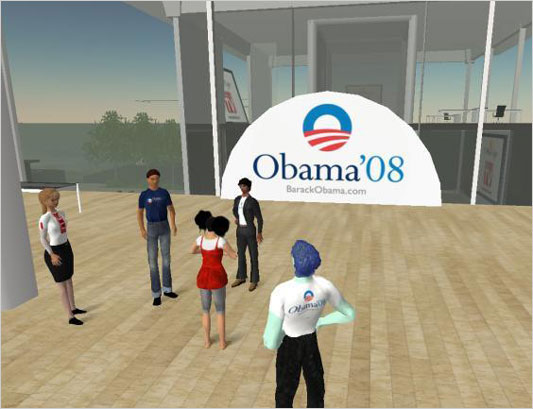So how should one go about gathering valid, reliable evidence, relevant content, and diverse perspectives? What qualifies information as authentic, valid and truthful? How does one know if facts are distorted? What sort of inherent or explicit factors might lead to a source providing biased information? How can people detect when a media piece is intentionally (or unintentionally) deceitful and manipulative? Critical thinking is perhaps the best tool we have to answer some of these questions and get closer to the truth so that we can make informed decisions and be confident that these decisions are based in reality.
Intuition, Linguistics, and Lies
In studying the practice of critical thinking, my thoughts about the use of intuition have evolved and matured. I started off staunchly defending the general use of intuition, believing that we have certain primal instincts that we too often ignore. Just like with other animals, these instincts are often instrumental in warning us we are in danger or perhaps that something simply doesn’t feel right. However, intuition is often used inappropriately and treated as a mystical substitute for well-reasoned, evidence-supported arguments. Andrew McAfee, a principal research scientist at MIT’s Center for Digital Business, discusses the research surrounding intuition, summarizing when it actually works and when it doesn’t. In short, intuition can be very valuable in select environments and applications such as poker or firefighting but in other contexts, such as the stock market, it is extremely unreliable. Additionally, many people tend to use intuition inconsistently. It often takes many years to build a good intuition in a particular domain and learn how to use it correctly. Finally, how information is presented can negatively affect the way fast judgments are made and often people may not be aware where the basis for their judgments came from. In other words, they may unknowingly be relying on faulty or biased preconceptions.
Chomsky (1988) admits that defending one’s self against propaganda takes “a major effort”, however he insists that one can
“Get to the point where it’s like a reflex to read the first page of the L.A. Times and to count the lies and distortions and to put it into some sort of rational framework.”As a linguist, perhaps he believes that one can learn and develop an intuition for detecting subtle language cues that help to identify where propaganda and manipulation exist in media, which then can provide a launching point for further critical investigations.
Police detectives and other law enforcement officials are well-trained at detecting lies. According to Vrij (2000), they pay close attention to specific non-verbal behaviors, verbal characteristics, and physiological responses. This could be valuable when watching a political candidate or other official representative speak on videotape. What about when you are reading text, however, and you don’t have any visual or audio cues? Well, Newman, Pennebaker, Berry, & Richards (2003) discovered that are particular linguistic styles or patterns that can help one distinguish between true and false written stories. For example liars use negative emotion words more often and “exclusive” words less often than truth-tellers. The authors state that
“Liars can be reliably identified by their words---not by what they say, but by how they say it.”These linguist researchers also insist that “deception takes work.” Chomsky (1987) agrees and extends this assertion, claiming, “Any system that’s based on lying and deceit is inherently unstable.”
Controlling the Agenda
Clay Shirky, among others, has elegantly illustrated how Web 2.0 (“the read/write web”), is a major media revolution that uniquely provide many-to-many communications and tremendous opportunities for sophisticated and effective group action. Everyone now is a publisher and can easily disseminate information to billions of others around the globe, instantly! On the surface, this seems like a perfect vehicle to combat institutionalized propaganda that comes from mainstream media sources and a huge opportunity for independent or marginalized media outlets. However, there are still many challenges.
First of all, the mainstream media still has much greater access to “official” sources, which, for many media consumers, are the most influential because of their authoritative status. According to American Reporter correspondent, Andy Oram,
“Elites control the critical sources of information and hand it out very selectively. This will not change if you’re on the Internet.”He goes on to say that the public has been “disciplined to accept certain forces as expert and to reject others.” Many elites in government and private enterprise have exploited this public conditioning even further by interviewing supposedly independent “experts” who happen to have corporate or lobbyist ties. Sebastian Jones wrote an article in The Nation about “The Media-Lobbying Complex.” He claims that mainstream media outlets have not done enough to adequately disclose these conflict-of-interest connections and questions why they are even being given such substantial airtime in the first place, considering their lack of objectivity. Often, these guests are introduced and identified by their last official government position rather than pointing out that they now presently work for a particular military contractor or lobbyist firm. Jones quotes Jeff Cohen from FAIR: "Gephardt will always be the former majority leader of the House. Period.... These guys know they won't be identified by what they do now but instead by what their position was years or decades ago.” By the very nature of who is paying them, it is reasonable to assume that these compromised, biased expert officials are much more likely to offer up political opinions on various issues such as health care or banking bailouts in a manner that favorably represents their corporate affiliations.
This introduces another major challenge. The mainstream media and its army of “official sources” still set the agenda as well as establish the talking points and boundaries of the debate. This manufactured debate usually translates directly over to the web. According to Ray Greenslade, a journalism professor at City University London,
“This kind of net activity goes on all the time. It is not transformative. The agenda is being set, as before, by mainstream media with the Net in the background… The net is still a political echo chamber, and not yet an influential democratic forum.”Thus, the debate is still defined by the corporate media and as Oram points out (referencing Chomsky), this power is often used to focus the public attention onto trivial and divisive personal issues and distract them from the more central, institutional problems at hand. As Chomsky says, “Public attention is diverted to overzealous patriots or to the personality defects of leaders who have strayed from our noble commitments, but not to the institutional factors that determine the persistent and substantive content of these commitments.” Sebastian Jones reinforces this agenda-setting idea in his Nation article. He interviews Janine Wedel, who states,
"When there's a whole host of pundits on the airwaves touting the same agenda at the same time, you get a cumulative effect that shapes public opinion toward their agenda."
There are a few exceptions where independent media sources on the internet have managed to break through the corporate media firewall and temporarily disrupt this top-down agenda by presenting something so damning, sensational, and compelling that the mainstream outlets are forced to respond and cover it. WikiLeaks is one such example. As Glenn Greenwald discusses in Salon, WikiLeaks.org has managed to obtain and leak official documents, video footage, and other materials that expose shocking and controversial behavior by the CIA, the military, and other government organizations. These leaks have included propaganda campaigns targeted at allied European countries and footage of American soldiers killing unarmed Reuters employees in Iraq. Such material is provided to WikiLeaks by anonymous whistleblowers, which Greenwald calls, “One of the last avenues to uncover government and other elite secrets.” Not surprisingly, WikiLeaks has recently been heavily targeted and harassed by a number of government and corporate entities around the world.
The New Media Challenge
Spending the past couple of months learning and applying critical thinking techniques has given me the opportunity to look at media, both on and off the web, in a whole new light. This experience has taught me invaluable lessons about how to read and consume media in a much more skeptical and empowered manner. It has shown me how media and advertising can be used to manipulate our emotions and dramatically influence our decisions. The Frontline episodes we watched illustrated how PR and marketing are becoming more sophisticated and targeted (i.e. “narrowcasting”) as data harvesting technologies become more advanced and psychoanalysis, linguistics, and behavioral research are applied more aggressively. I also have discovered how to detect faulty arguments and recognize propaganda more quickly and effectively.
As Will Richardson strongly advocates, we need to become active readers rather than just passive consumers. He believes that as educators and parents, we must model these behaviors for young students both inside and outside the walls of the physical classroom. Chomsky agrees. He states that
"Citizens of the democratic capitalist societies should undertake a course of intellectual self-defence to protect themselves from manipulation and mind control."As media psychologists at Fielding, we must utilize critical thinking to responsibly conduct research and evolve our expertise in an overall effort to help people inform themselves more accurately, communicate more empathetically, and organize more effectively. Only then will people be able to reach the top rung of Shirky's social ladder where they can use collective action to set their own national and global agenda that preserves human rights, advocates social justice, and celebrates diversity.
























